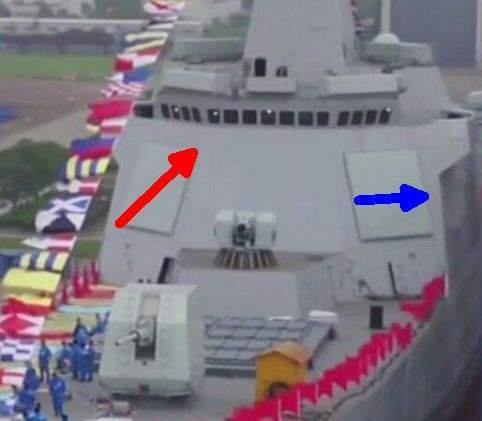Interesting how even after 3 days I made the original post, the discussion is still ongoing. I admit that saying the 052D is significantly more capable than the Burkes was a stretch. It's also imperative, however, that we're able to make reasoned comparisons without our judgment being clouded by existing biases.
As far as this discussion is concerned, I think Iron Man hit the nail on the head with his examination, though there are a couple of key points I'd like to contest.
For one, we know with a high degree of confidence that the 346A's volume search array is roughly the same size as the SPY-1D, as there are pictures of the 346 with the front panel off. In that regard, it's a toss-up between the two, but I believe the FCR makes the crucial difference. While the 052D's FCR for its medium-range SAMs is a C-band AESA, the Burke still relies on three SPG-62 illuminators for the SM-2s. I believe that difference is enough to give the 052D's sensors a small, but clear advantage.
The other point is with regards to 'magazine size'. Yes, the Burke has 96 cells versus the 052D's 64, but the Chinese VLS are much larger in terms of volume. At best, the larger Chinese missiles currently might only be on par with the smaller American ones, so the Burke wins out in this department by virtue of having better missiles, not more cells. Yet, the fact remains that a 55cm diameter, 7.7m deep cell can only hold so much weight, while a 85cm, 9m deep cell can hold a missile almost three times larger by volume. In this sense, are the 052D's 64x 85cm VLS really inferior to the Burkes' 96x 55cm VLS?
All of that being said, I honestly believe it's not far-fetched to suggest that the 052D's capabilities already exceed the Burkes' - perhaps only in a few ways now (specifically FC sensors, ASuW, missile load in weight, and point defense). What the 052D can't do as well as the Burkes is AAW, missile load in numbers, and the lack of ABM capabilities. In all other areas, the 052D is arguably slightly superior at best, and on par with the Burke at worst.
.
Of course, I didn't write this post just to bore and annoy everyone with my stubborn arguments. Rumor has it that there is evidence of the 7th 055 being constructed at Dalian.

Image courtesy of fzgfzy from CD forums.
As far as this discussion is concerned, I think Iron Man hit the nail on the head with his examination, though there are a couple of key points I'd like to contest.
For one, we know with a high degree of confidence that the 346A's volume search array is roughly the same size as the SPY-1D, as there are pictures of the 346 with the front panel off. In that regard, it's a toss-up between the two, but I believe the FCR makes the crucial difference. While the 052D's FCR for its medium-range SAMs is a C-band AESA, the Burke still relies on three SPG-62 illuminators for the SM-2s. I believe that difference is enough to give the 052D's sensors a small, but clear advantage.
The other point is with regards to 'magazine size'. Yes, the Burke has 96 cells versus the 052D's 64, but the Chinese VLS are much larger in terms of volume. At best, the larger Chinese missiles currently might only be on par with the smaller American ones, so the Burke wins out in this department by virtue of having better missiles, not more cells. Yet, the fact remains that a 55cm diameter, 7.7m deep cell can only hold so much weight, while a 85cm, 9m deep cell can hold a missile almost three times larger by volume. In this sense, are the 052D's 64x 85cm VLS really inferior to the Burkes' 96x 55cm VLS?
All of that being said, I honestly believe it's not far-fetched to suggest that the 052D's capabilities already exceed the Burkes' - perhaps only in a few ways now (specifically FC sensors, ASuW, missile load in weight, and point defense). What the 052D can't do as well as the Burkes is AAW, missile load in numbers, and the lack of ABM capabilities. In all other areas, the 052D is arguably slightly superior at best, and on par with the Burke at worst.
.
Of course, I didn't write this post just to bore and annoy everyone with my stubborn arguments. Rumor has it that there is evidence of the 7th 055 being constructed at Dalian.

Image courtesy of fzgfzy from CD forums.




